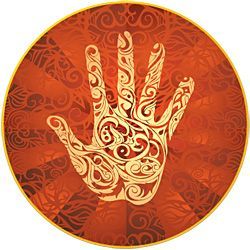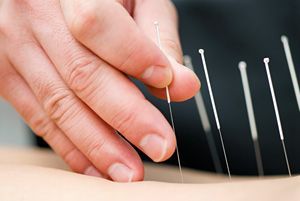Whether you accept it, avoid it or live somewhere in between, insurance coverage has become a defining issue for our profession. Patients increasingly expect to use their benefits, practitioners want to be compensated fairly for their time and expertise, and the system itself remains – at best – fragmented. The encouraging news is that coverage has expanded in meaningful ways. The challenging news is that reimbursement, across the board, remains inadequate.
Master Tung's Five Zang Channel System and Clinical Applications
Tung's Acupuncture was originally a closely guarded oral tradition that was exclusively passed down within the Tung family. Master Tung Ching-Chang broke this tradition and accepted his first disciple outside the family in 1962 in Taipei, Taiwan, over 48 years ago. Since then, Master Tung's system has gained a tremendous amount of momentum and popularity. It is currently one of the most sought after and highly esteemed schools of acupuncture, characterized by its simplicity, ease of use, and great clinical efficacy.
Although Tung's acupuncture is famous for it's unique set of acupuncture points, the unique points are just part of a much bigger picture. Tung's acupuncture is a complete system that includes its own channels, unique points, diagnostic methods and needling techniques. Furthermore, Tung's acupuncture is based on a five zang (six fu) channel system that is unique to the Tung system, and different from the traditional 14 channels of acupuncture. The five zang channel system however, is not widely known of, as it has been obscured in most of the literature regarding Tung's acupuncture. Luckily, two previously unreleased documents clearly demonstrate how Master Tung utilized this channel system in the diagnoses and treatment of disease.
Classic Texts and Early Writings of Tung's Acupuncture

Regarding the ancient writings of his ancestors, Master Tung explained, "It is very sad that the original Tung's Acupuncture textbooks were destroyed in the war in my ancestor's era. Fortunately, I have memorized the secret key to this system, which was passed down by family oral tradition. After more than 300,000 clinical cases, the effectiveness of Tung's Acupuncture is confirmed completely."4
Until recently, the only written works available to us by Master Tung was the 1973 publication titled "Tung's Acupuncture, Its Regular Channels & Unique Points" and the two papers titled, "Treatment Record of Stroke of President Lon Nol of Republic Khmere," which were published by Master Tung in 1971 and 1972. Fortunately, two other works titled "Tung's Acupuncture, Its Regular Channels & Unique Points" and "Ching-Chang's Points & Clinical Cases," were released by Master Tung's disciple, Mr. Yuan, Kou-Ben in 2008. The former document was edited by Master Tung, and includes commentary and learning experiences by Mr. Yuan. The latter was recorded by Dr. Chen, Du-Ren; who was a famous TCM doctor before becoming Master Tung's direct disciple in 1964.
When teaching his system, Master Tung decided to use modern Western medical terminology rather than traditional Chinese concepts, because Western medicine was more accepted during those times. In the preface of his 1968 publication, Master Tung stated, "I made use of modern language to write this book to advocate the quintessence of Chinese culture and treat more severe and lingering illnesses."2
This is why there is an anatomy section in Master Tung's book that lists various nerves in the point descriptions. Master Tung used the term "nerve" to relate the information regarding the five zang channel system. Interestingly, the term "nerve" does not appear at all in the older 1964 document, only the term "channel." For example, Master Tung said, "All heart channel illnesses, are effectively treated by Shoulder Center and Heaven Pathway."3 In Dr. Chen's 1964 note, Shoulder Center and Heaven Pathway are listed as heart channel points, but in Master Tung's 1973 textbook in the anatomy section, Shoulder Center is classified as part of the "heart branched nerve" and Heaven Pathway as part of the "heart common nerve."5
The Five Zang Channel System and Palmar Diagnosis
All of Master Tung's points are classified according to the five elements (wu xing) and the five zang (wu zang) channel system. For example, in Tung's acupuncture, the points located on the back are distributed along five lines. The five lines on the back are further divided into upper, middle and lower regions. Each region has its own five element classification. The fire points are used for treating diseases related to the heart; Earth points treat disorders related to the spleen; metal treats lung related issues; water points treat diseases related to the kidneys; and wood points treat liver related problems.
Master Tung's palmar diagnosis is also based on the five elements and the five zang channel system. For instance, the line from the index finger to LU10 is the lung channel; from the middle finger to PC8 is the heart channel; from the ring finger to the wrist crease is the liver & spleen channels; and from the small finger to the wrist crease and the ulnar side of the palm is the kidney channel.3 Master Tung formulated a diagnosis mostly by observing abnormalities on the palm such as a blue vessel, redness, or discoloration. In this way he was able to determine the root cause of the disease, based on the five zang channels. Master Tung summarized this as follows, "If the diagnosis is exact, the location of points is accurate, and the needle technique is skillful, the result will be quick and successful. No other school of acupuncture can surpass its effectiveness."4
In practice, Master Tung's palmar diagnosis can be combined with the five zang pathomechanism of the Nei-Jing and the five zang diagnosis of the Nan-Jing. This way diagnosis will be exact and the method of selecting points according to the diseased channels, will deliver exceptional results. The following quotation from the Nei Jing provides some insight into the five zang pathomechanism:
"All wind [diseases characterized by] tremor and dizziness are associated with the liver; all cold [diseases characterized by] astringency and contraction are associated with the kidney; all qi [diseases characterized by] oppression and stagnation are associated with the lung; all dampness [diseases characterized by] swelling and fullness are associated with the spleen; all [syndromes characterized by] pain, itching and sores are associated with the heart."5
Master Tung's Early Case Studies
The following are numerous case studies by Master Tung.
In a case study on Pericardial Disease Master Tung noted: "A patient complained of severe distention and a burning feeling extending from the xiphoid process to Ren13. By carefully examining the patient's palm, Master Tung diagnosed the condition as pericardial disease. To treat this condition, he only applied one needle to the point on the central line of the thigh. The patient felt comfortable immediately. It was marvelous! "3
By observing changes in the heart channel line of the palm, Master Tung determined that the patient was suffering from pericardial disease. He then selected a point on the central line of the thigh, which is the Tung system's heart channel. The single point Master Tung selected to treat this condition was Heaven Pathway5. This demonstrates the effectiveness of Master Tung's palmar diagnosis in determining which channel and points to select for treatment.
Master Tung once treated a case of polio using the following points: Shoulder Center (Jian Zhong 44.06), Cloud White (Yun Bai 44.11) and Lower Curve (Xia Qu, 44.15). The patient had suffered from polio for four years and miraculously was able to walk after 30 treatments. Mr. Fan, Zhong, one of Master Tung's disciples, explained, "Shoulder Center belongs to the heart channel; the lower radial side, Cloud White belongs to lung channel; and the lower ulnar side Lower Curve belongs to liver channel"3
According to traditional 14 channels, Shoulder Center is located on the san jiao channel, Cloud White is on the lung channel, and Lower Curve is on the small intestine channel. But, according to Tung's channel system, Shoulder Center belongs to the heart channel, which means heart qi connects to ministerial fire qi of the san jiao. White Cloud belongs to Tung's lung channel, which means lung qi connects to the large intestine qi. And Lower Curve belongs to Tung's liver channel, which means liver qi connects to the small intestine qi.

In a case study about cerebral nerve disease, Master Tung said, "A patient was unable to hold on to an object due to trembling hands. His medical doctor's diagnosis was cerebral nerve disease, and it was suggested that he undergo an operation. Instead, the patient invited me to treat his condition. My diagnosis was heart channel disease, and treatment was focused on the heart channel. I applied needles to Central Meeting (Zhen Hui 1010.01) & Calm Mind (Zhen Jing 1010.08) two times, and his trembling condition subsided."3
Central Meeting (Zhen Hui 1010.01) is Bai Hui (Du20) of 14 channels system, and Calm Mind (Zhenjing 1010.08) is 0.3 cun above the Yin Tang. Under the anatomy section of Master Tung's textbook both these points are categorized as being related to the "cerebral nerve." In TCM, the brain (cerebrum) is the house of the spirit and heart is the room of the spirit. Since Master Tung diagnosed the "cerebral disease" as "heart channel disease," we can conclude that the "cerebral nerve" also belongs to the heart channel in Tung's system.
Conclusion
Armed with the wisdom inherited from his ancestors, Master Tung rebuilt his family's art and vastly expanded upon it. Tung's acupuncture is not just a collection of experiential points; it's a complete acupuncture tradition that predates the traditional 14 channels system. The origin and principle of each of Master Tung's points follow the law of the five elements (wu xing) and the five zang (wu zang) channels. Each point has its own pathway which directly connects to the five zang (and six fu). For instance, Gate Pathway (88.01, Tong Guan) directly connects to the heart; Four Horses Center (88.17, Si Ma Zhong) directly connects to the lung; Kidney Pathway (88.09, Tong Shen) directly connects to the kidney; and Bright Yellow (88.12, Ming Huang) directly connects to the liver.
English translations of Master Tung's texts generally use the term "reaction area" to relate the information regarding the five zang channels. In reality, this term is not accurate and was chosen because there is no Western equivalent to the so-called "nerves" listed in Master Tung's anatomy. Furthermore, in most of Tung's acupuncture texts available in English, the authors have added additional Western anatomical designations, non-existent in Master Tung's original works. Although interesting from a Western medical perspective, this direction of study further obscures the inner workings of the Tung family system.
We owe Master Tung a tremendous amount of gratitude for his life long commitment, dedication, and willingness to teach. Without him, this profound acupuncture art would have become a lost treasure of Chinese medicine, unavailable to future generations.
References
- Kou Ben Yuen. Tung's Acupuncture Institute Album. Taipei: Self Published; 1976.
- Ching-Chang Tung. Tung's Acupuncture, Its Regular Channels & Unique Points (Note). Taipei: Self Published; 1968.
- Du-Ren Chen. Chin-Chang Points & Clinical Cases (Note). Taipei: Self Published; 1964.
- Ching-Chang Tung.Tung's Acupuncture, Its Regular Channels & Unique Points (Textbook). Taipei: Shin Ya Press; 1973.
- Zhaoguo Li & Xiru Liu trans. & edited. Yellow Emperor's Canon of Medicine Plain Conversation III.(Chinese-English). Xi'an: World Publishing Co.; 2005. p.1216-1219


